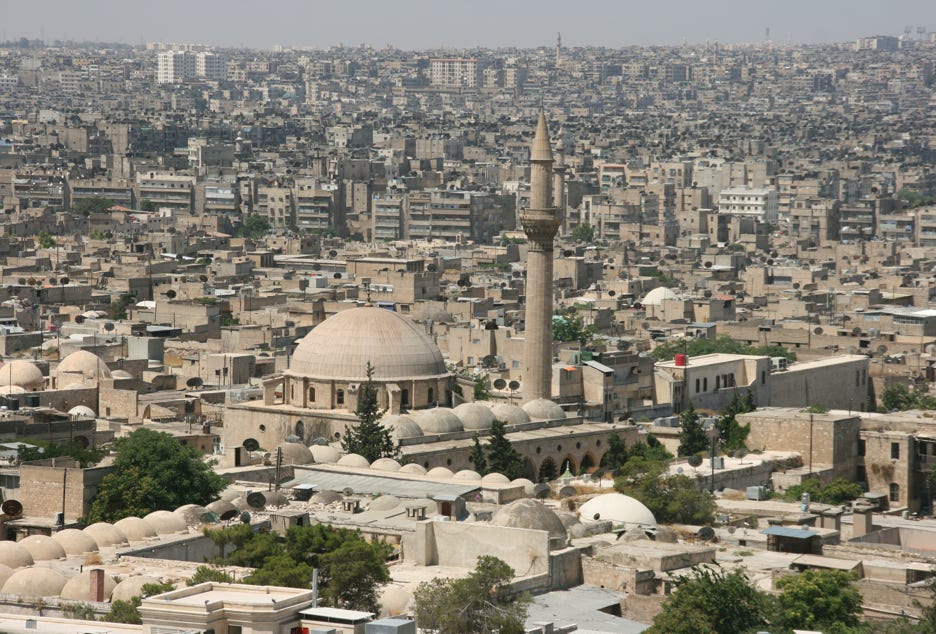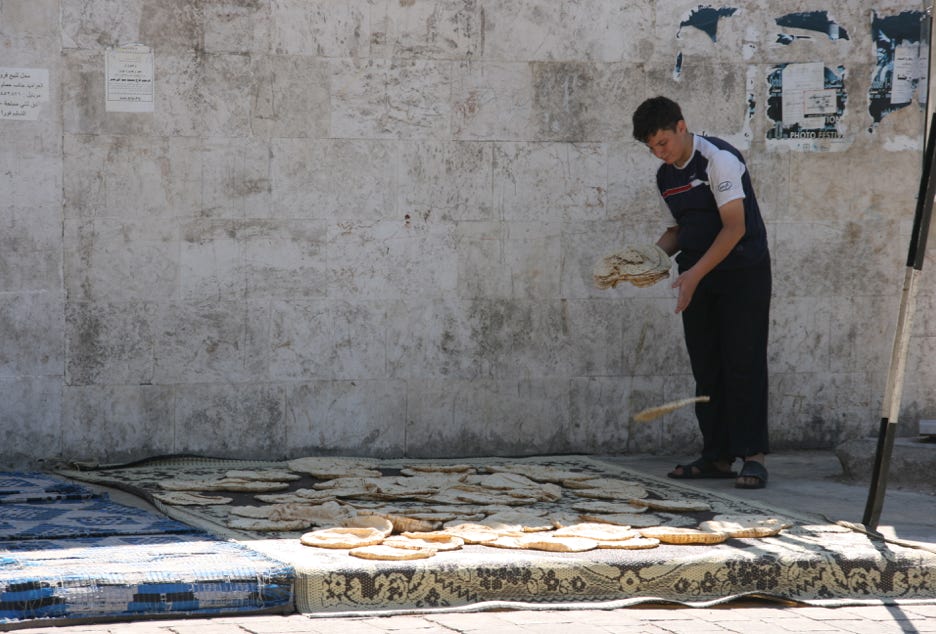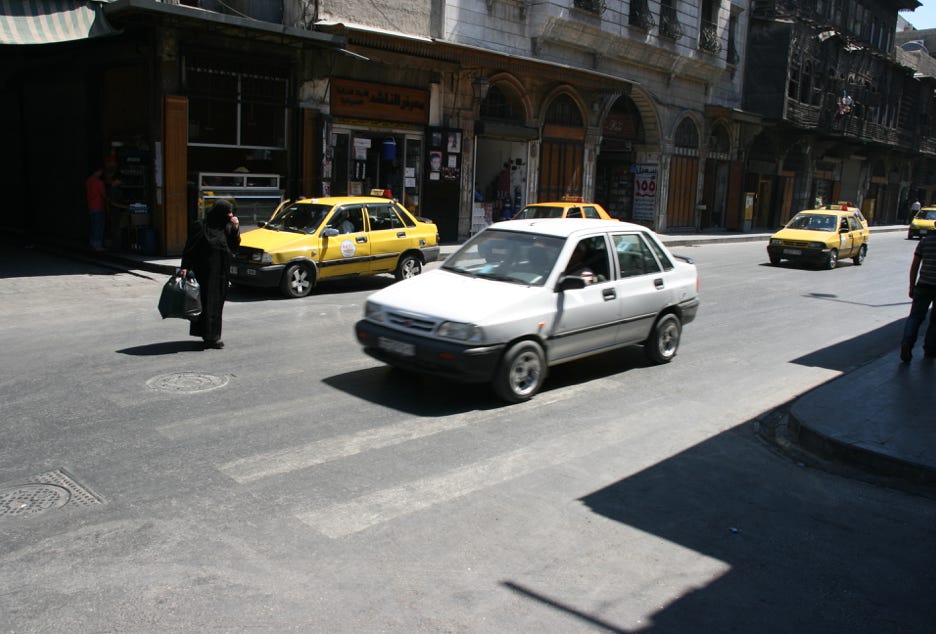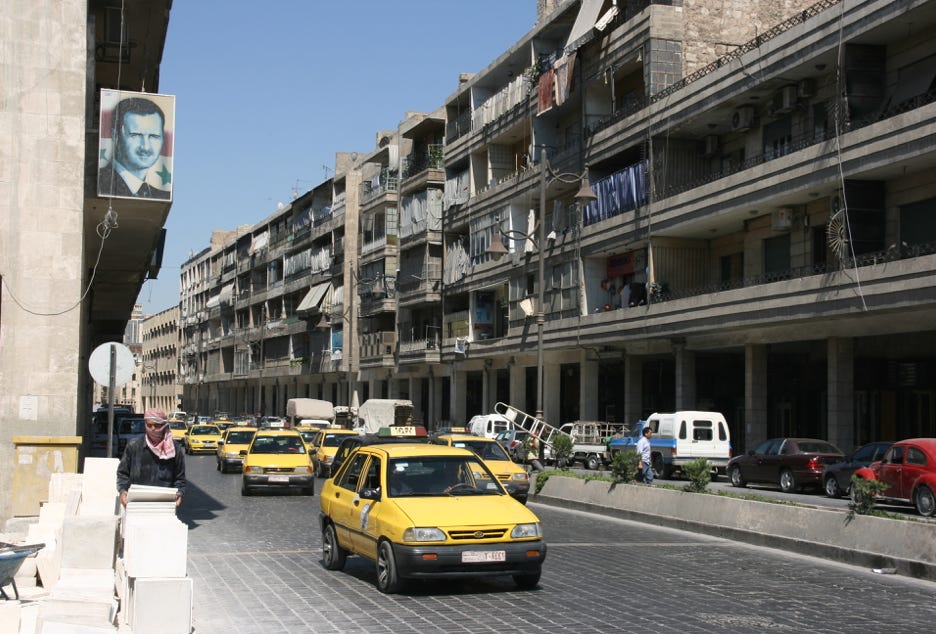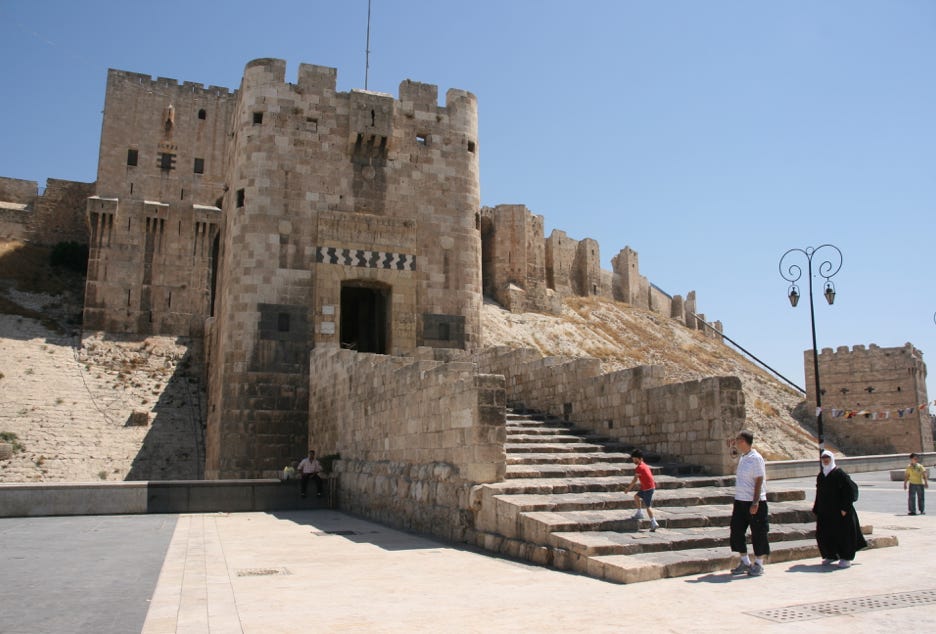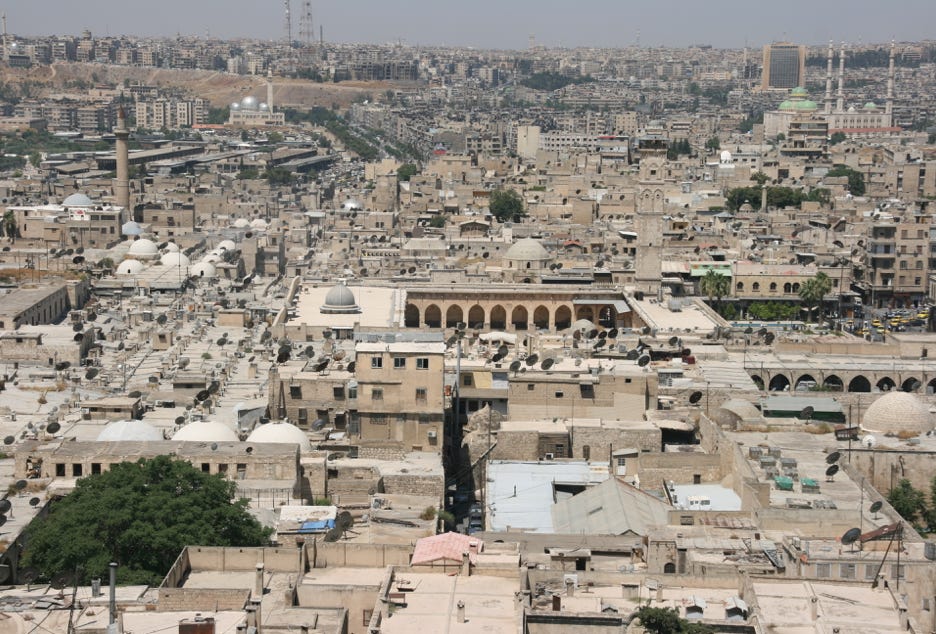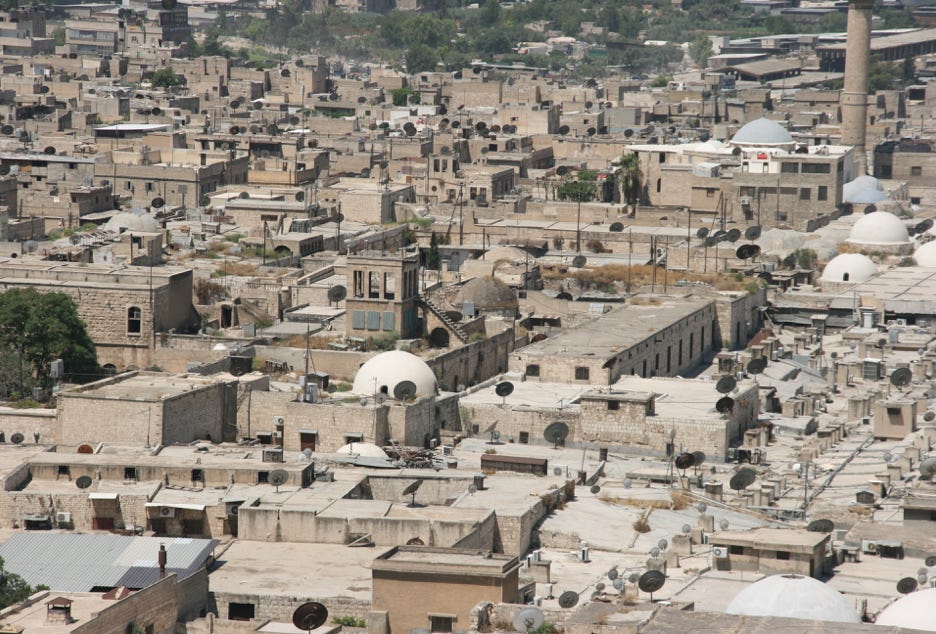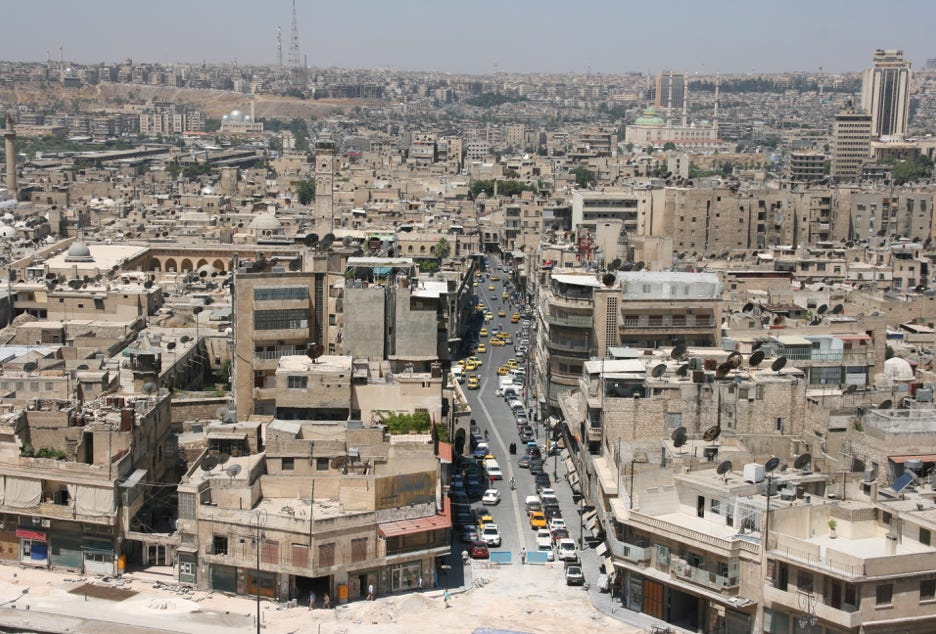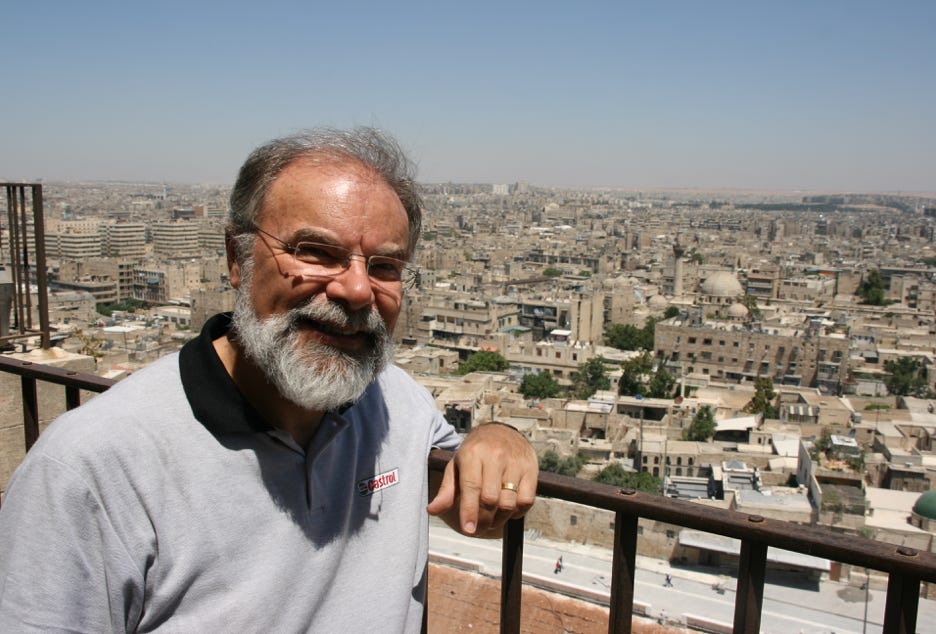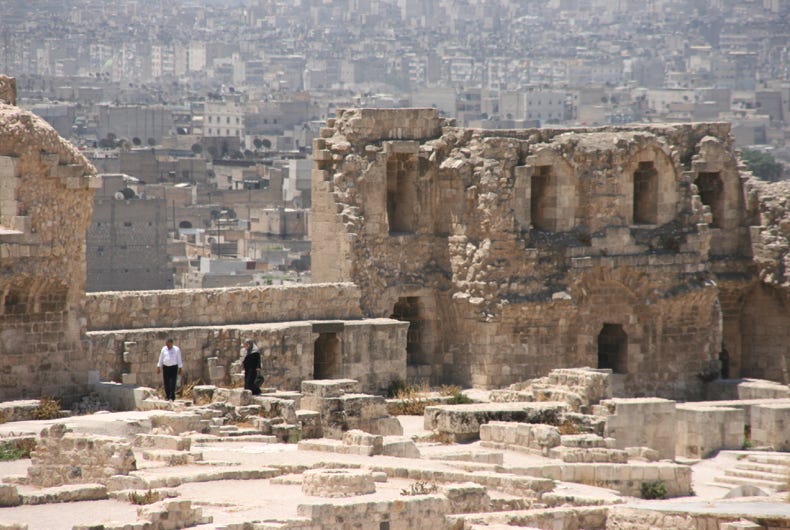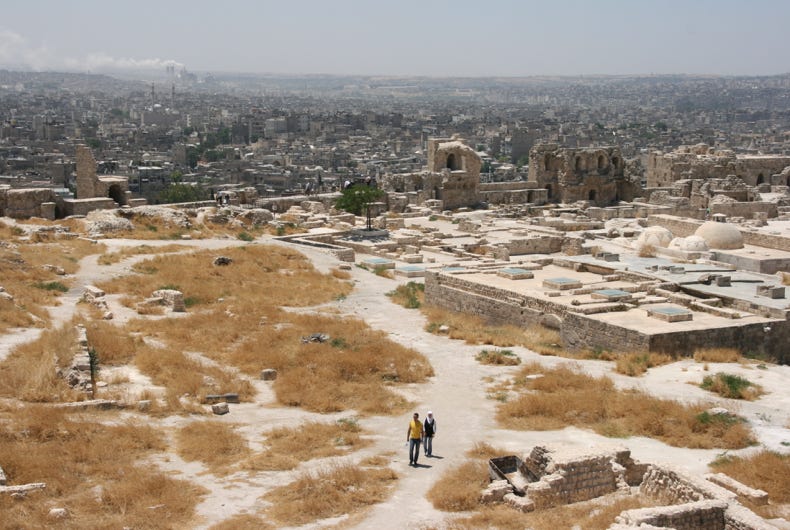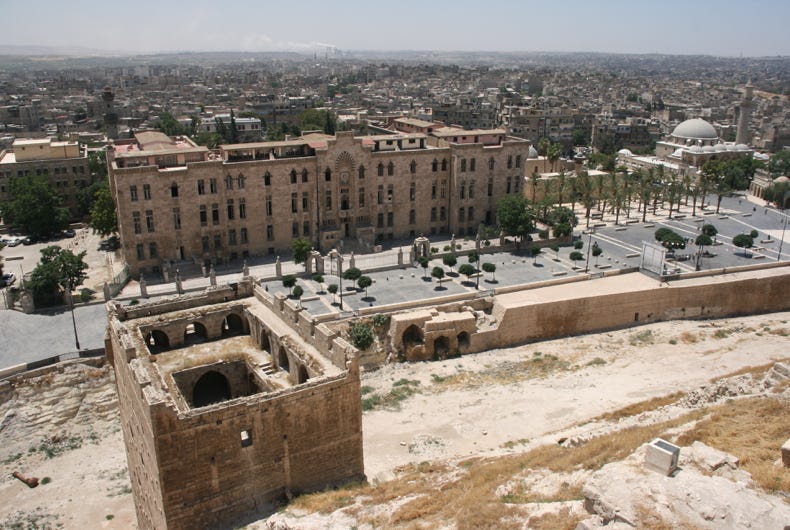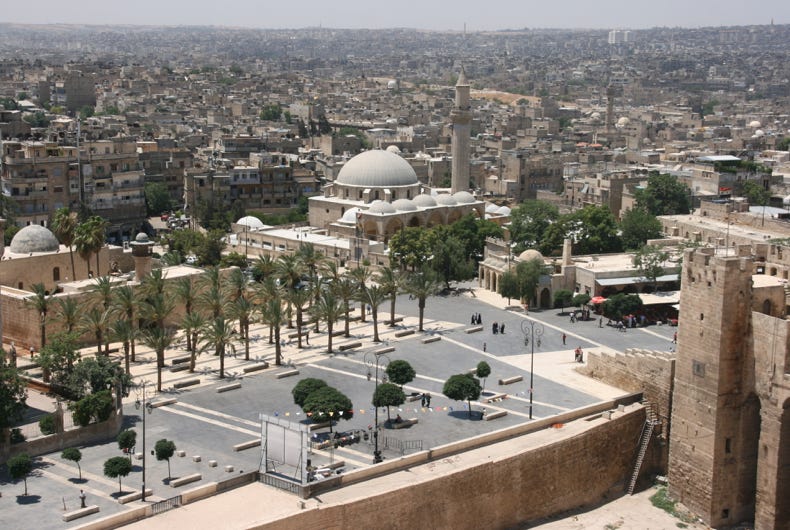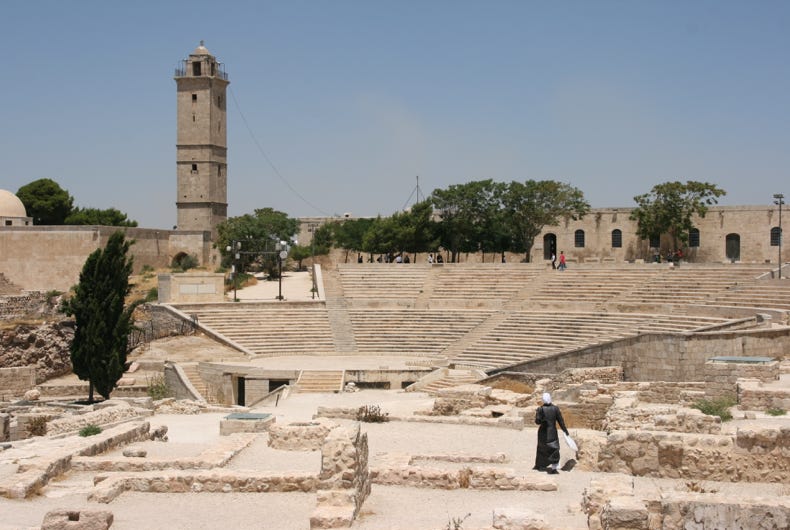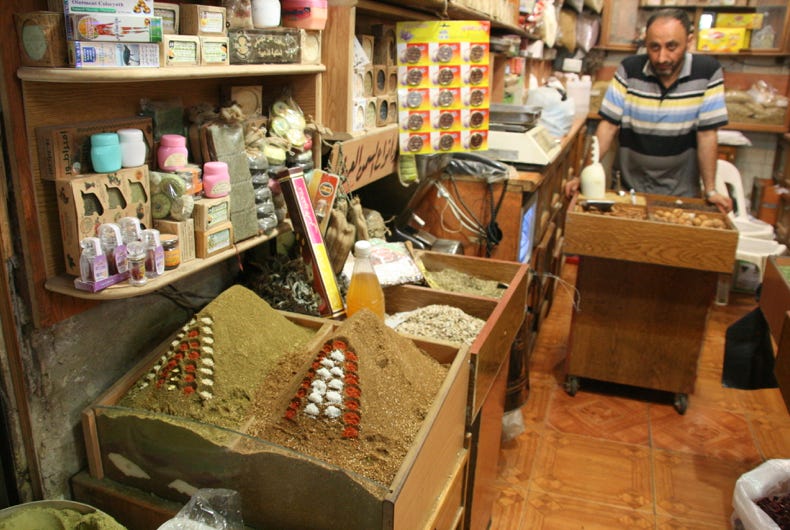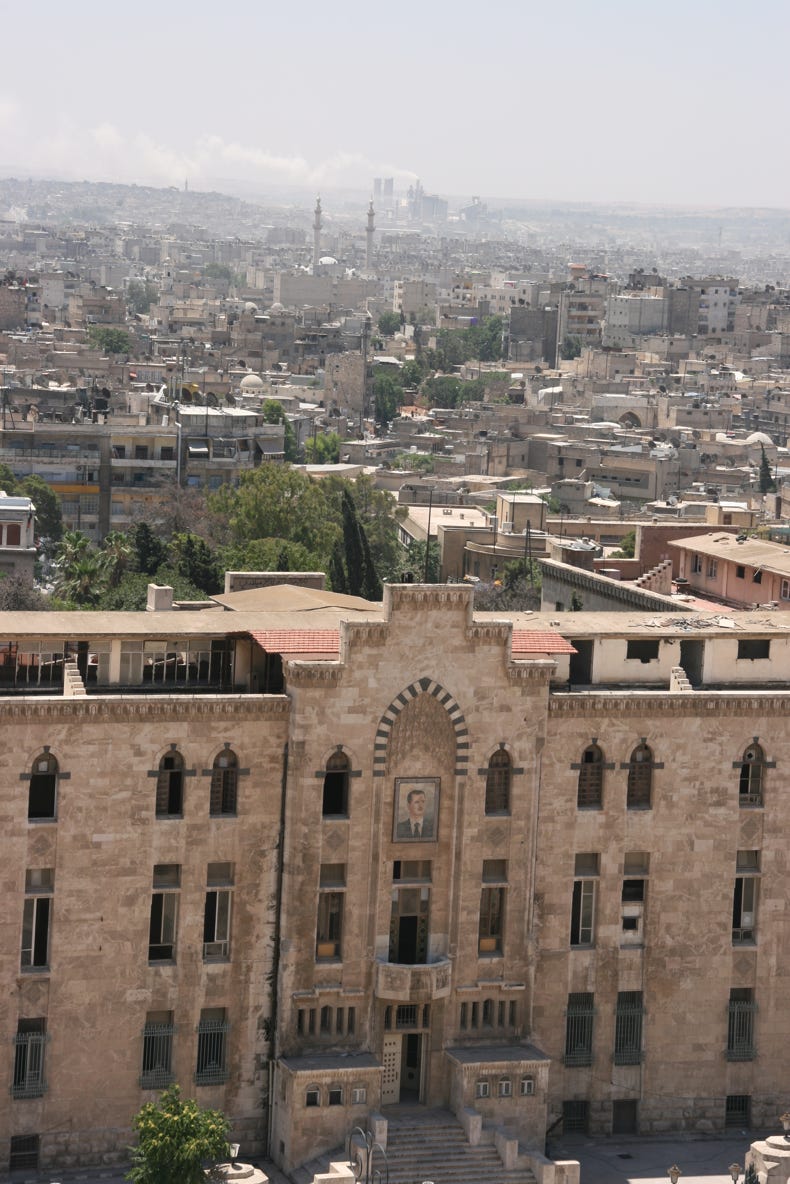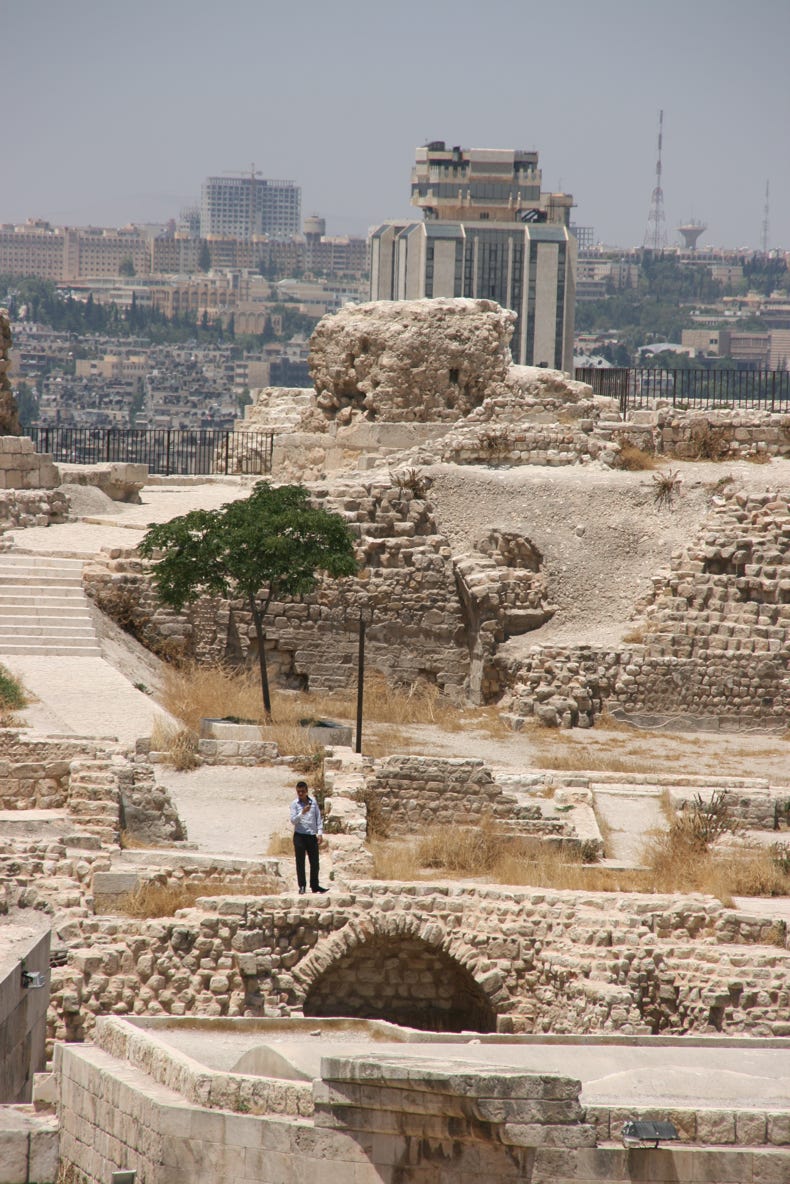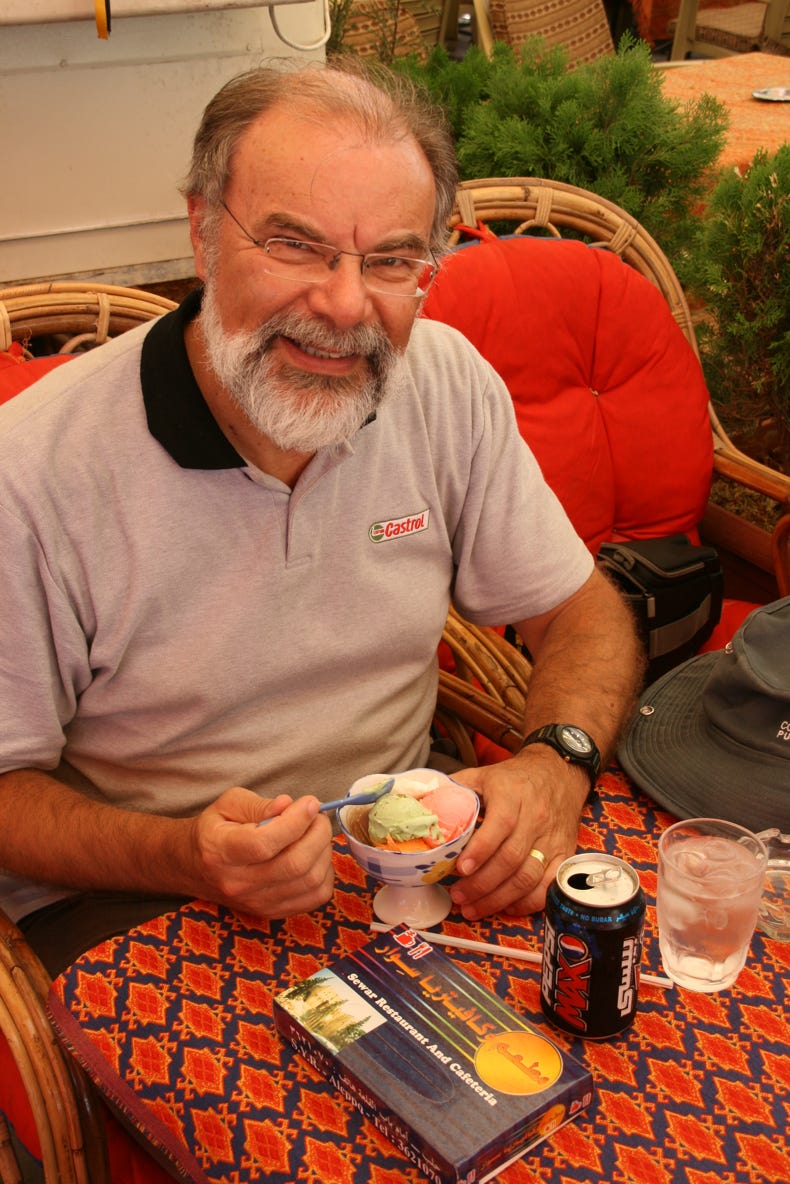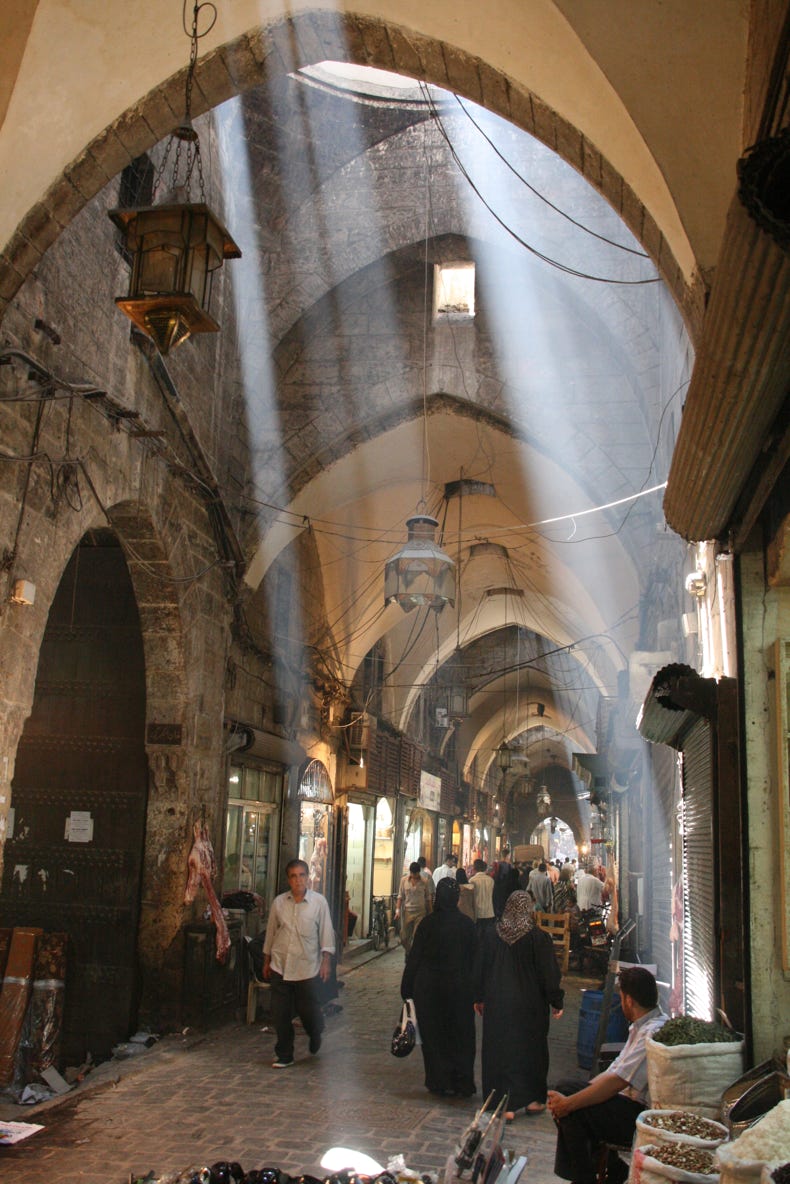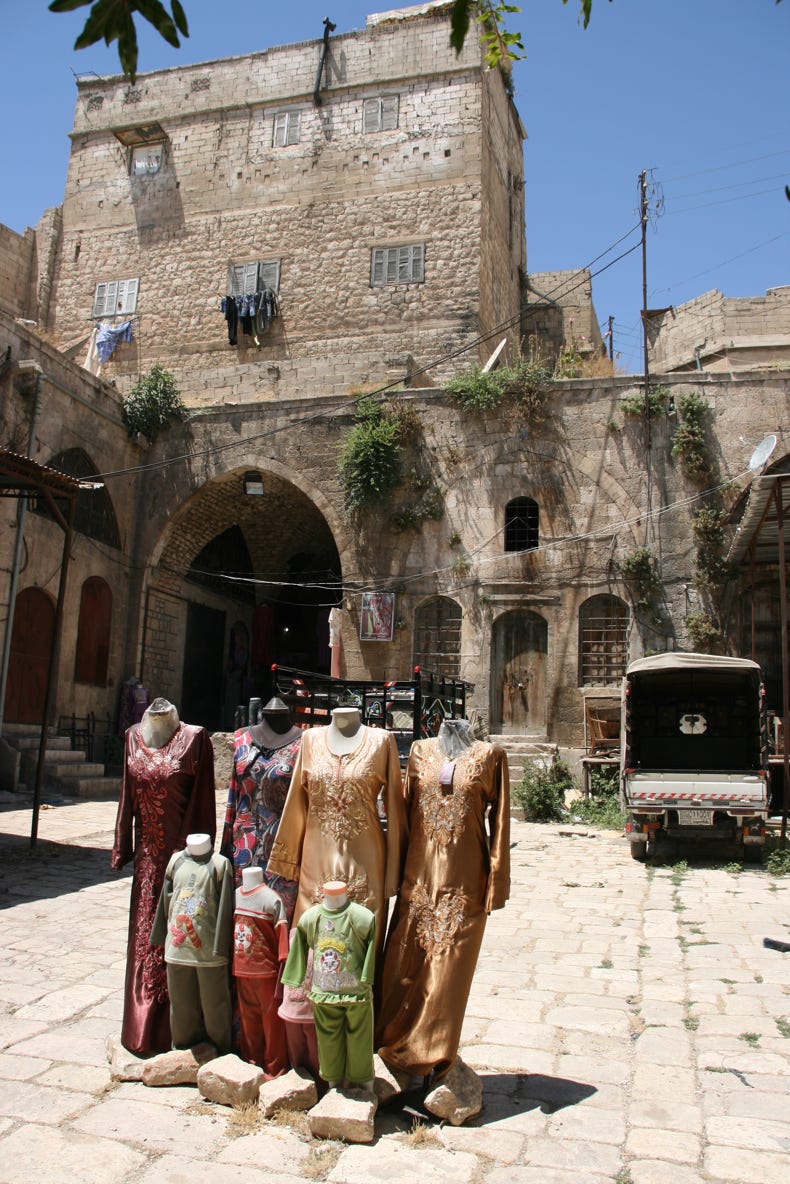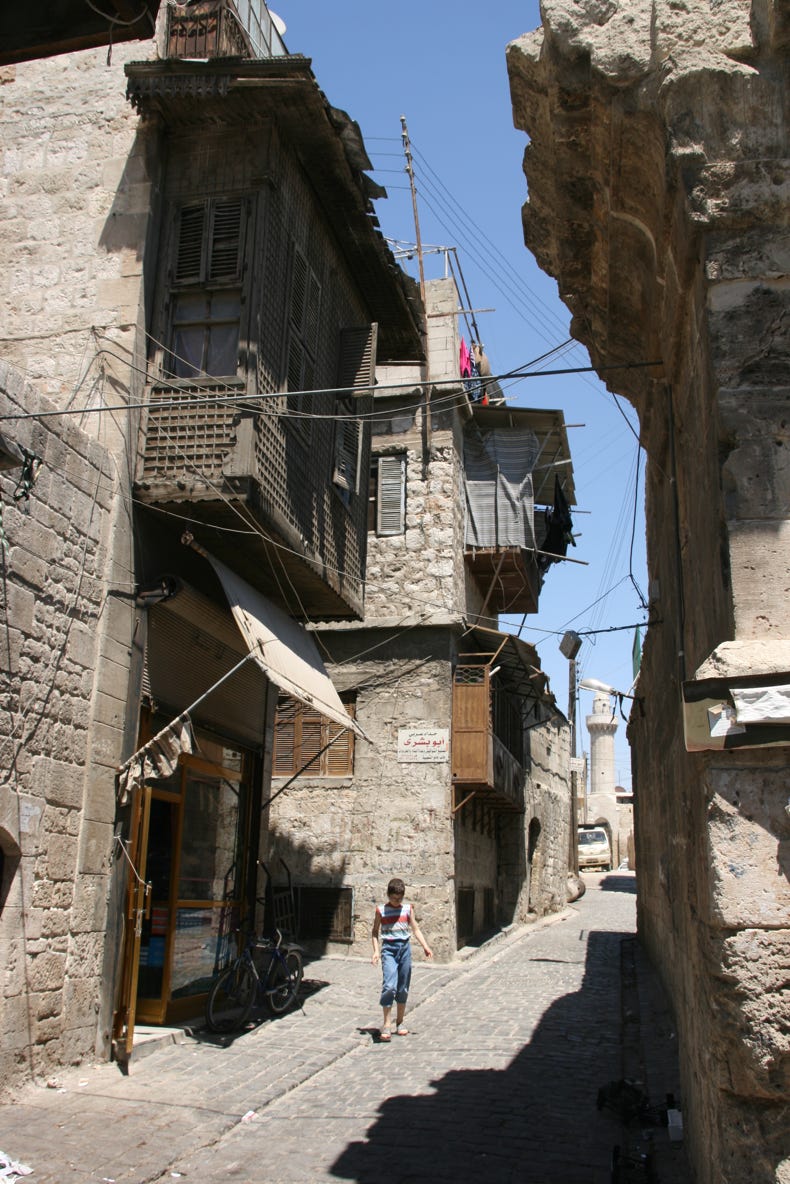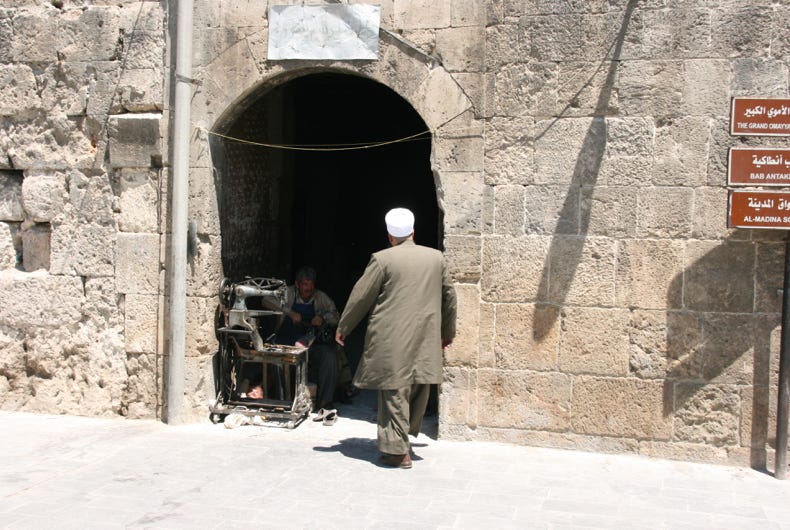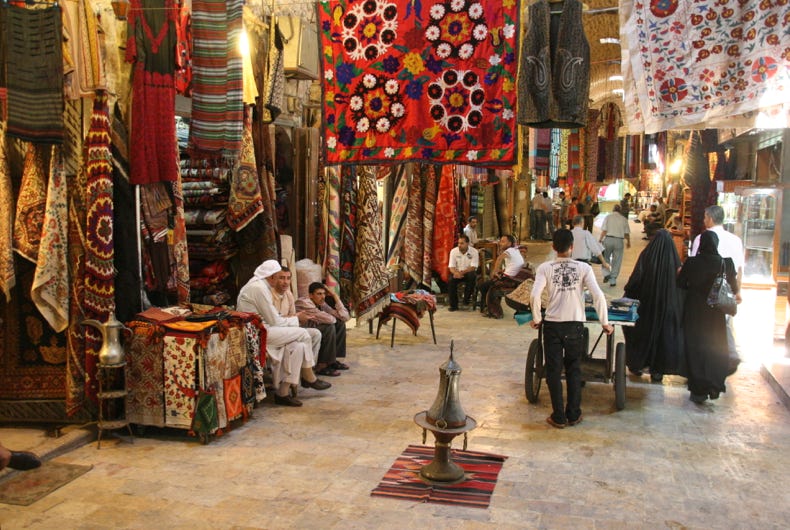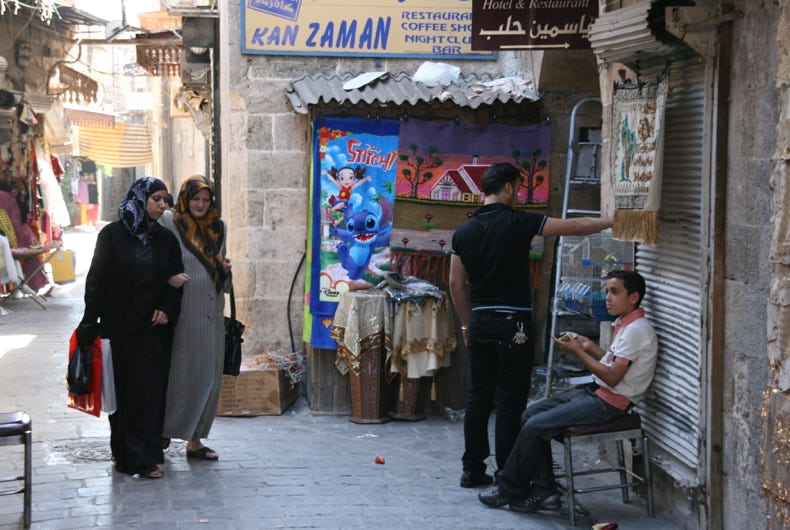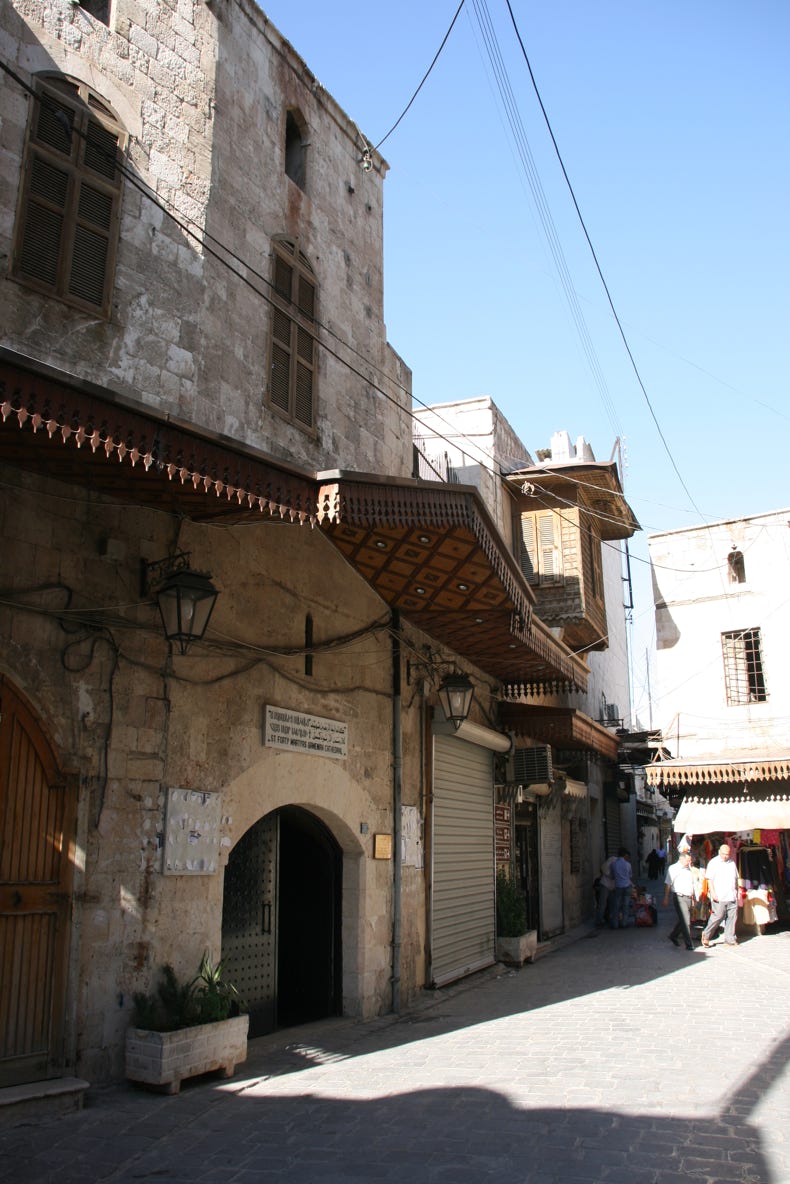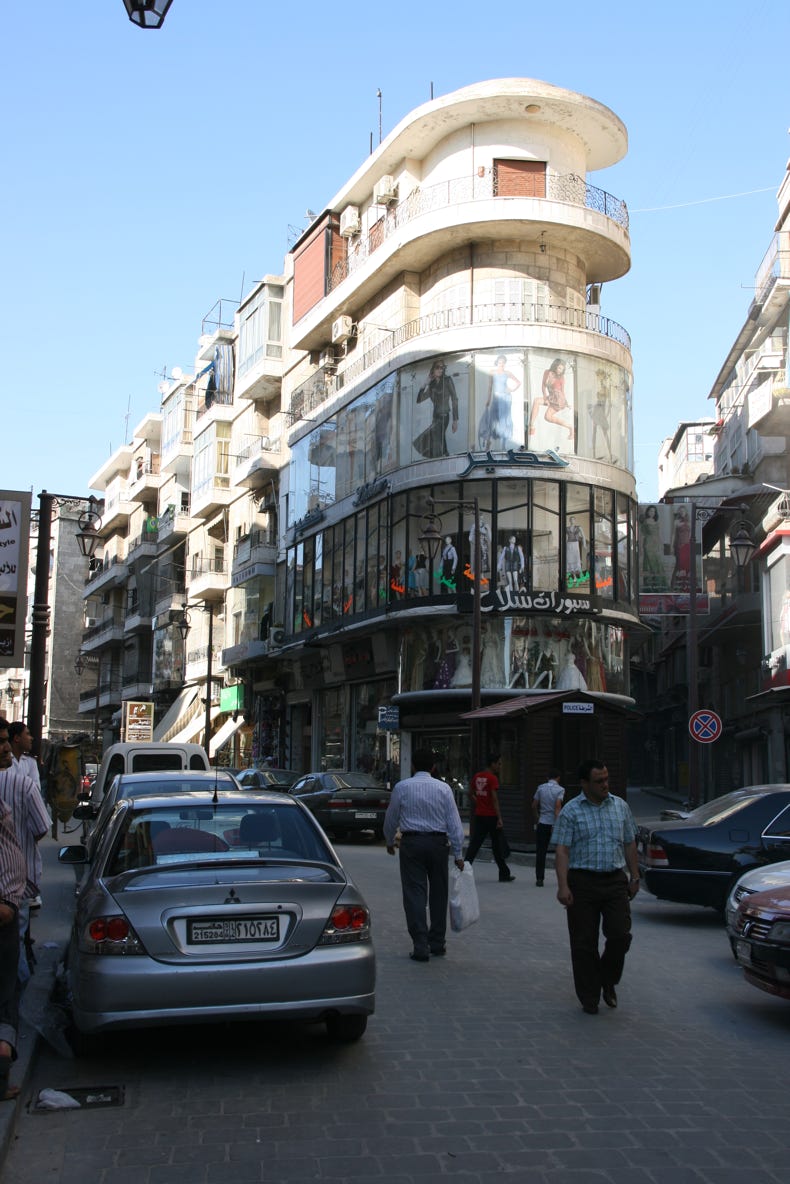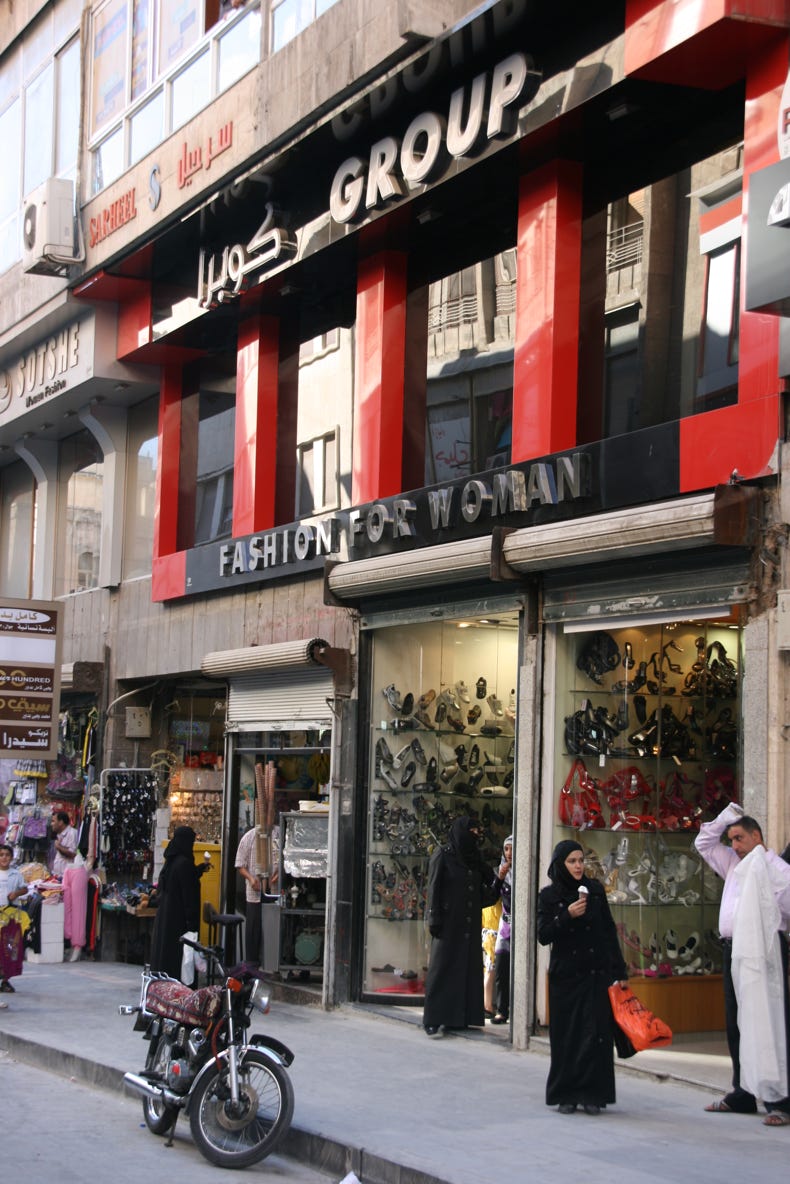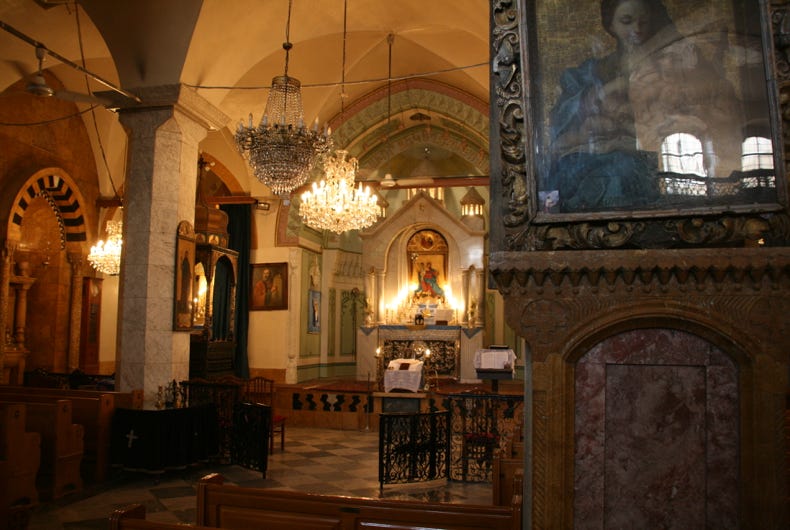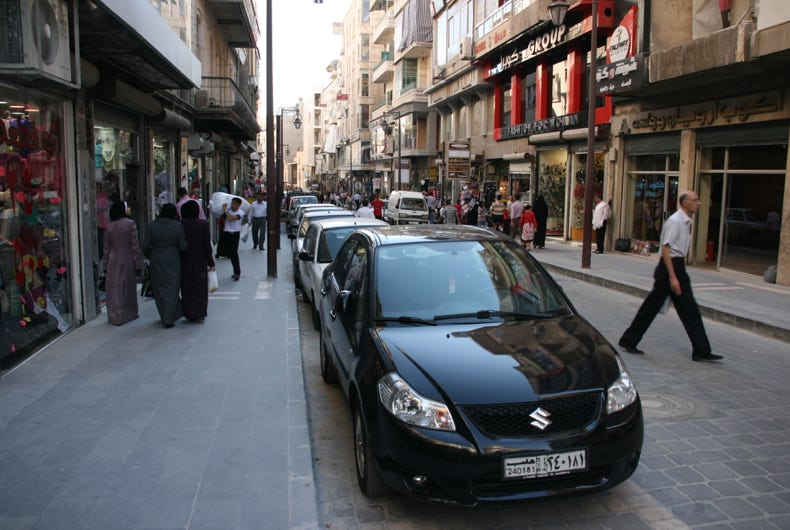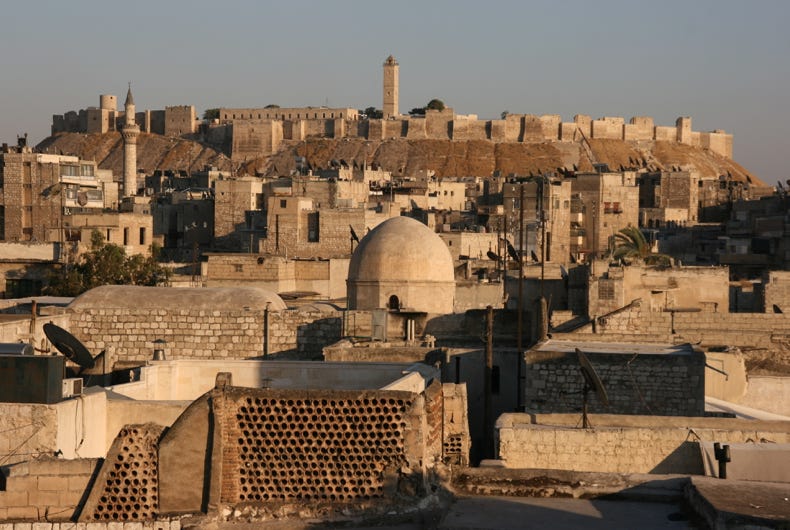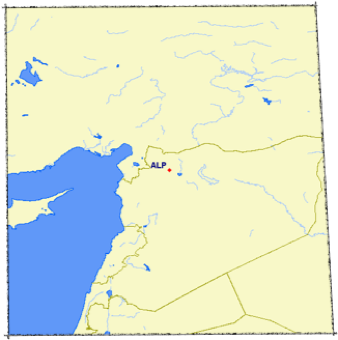
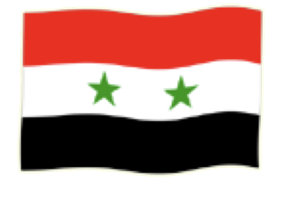

It has been wonderful to have a day just soaking up the atmosphere of Aleppo. After a very late night last night attending to e- mails, we slept in to 8:15 am this morning – not having any windows in our room certainly helped maintain a good sleep!
After a breakfast at the hotel that excelled in its mediocrity, we took our time heading to our first destination, the Citadel. Although it was after 9:30 by the time we ventured out, it was evident that this was was nonetheless still early in the day for local people. Just around the corner from our hotel a bakery was turning out its first loaves (sheets?) of flat bread for the day, and we were able to witness the interesting spectacle of employees (some of whom were young boys) throwing the loaves down onto mats on the footpath or over the backs of chairs to dry them in the sun. Now I know why even freshly baked bread in Syria can sometimes be very dry to eat.
Interspersed with my sightseeing today I spent quite a bit of time investigating the program of urban renewal here in Aleppo, using as a basis the information I had gleaned the previous day at the urban planning and renewal exhibition. Once I had been sensitised to the urban renewal programs, I started finding evidence almost everywhere I looked – newly renovated wooden balconies on traditional homes, new open areas and parklands, newly paved pathways, the city’s first pedestrian crossings, and so on. I suspect that Andrew had trouble understanding why I might want so many photos of people almost getting run over at a pedestrian crossing (as the concept of how pedestrian crossings might work in practice does not seem widely understood here), but he was very patient as I gathered my data.
The Citadel was so impressive that we stayed there until early afternoon. It comprised ruins from many eras on top of a huge artificial hill that can be seen from many parts of Aleppo. We were told that some of the earliest remains dated back to the 3rd millennium BC, and the first fortifications were built by the Seleucids in 363 BC to 333 BC. These were added to by successive invading armies, notably the Crusaders during the 12th century and the Mamluks who occupied the area from 1250 to 1517.
The Citadel was entered via a high stone bridge that took us through two high defensive towers with heavily worn, smooth steps – something of a challenge as I was still wearing the old shoes that had lost their soles in the heat of Giza in Egypt. (Note to myself: throw out those life threatening fragmentary remains of shoes!). Most of the area on top of the hill was in ruins, although no less interesting for that, as excavations were continuing in several parts.
However, the real highlight was the views of Aleppo in all directions. It was fascinating to look down on the roofs of the souks and mosques that we had visited the previous day, and also to see out across the Old City to the new developments beyond. The views were spectacular in every direction, and the top photo in the right column of this page gives just one example of these views.
Upon descending from the Citadel, we found ourselves in a recently renovated plaza (urban renewal!) with several traditional cafés off to one side, offering both welcome shade and spectacular views of the Citadel.
As the heat of the day was coming upon us, we decided to stop for a while and enjoy some ice cream and drinks. The café endured what I thought was a somewhat unfortunate name with limited marketing potential – the Sewar Café (as can be seen on the mandatory box of tissues in the accompanying photo), but the ice cream was good and the drinks were cold, which is what mattered to us.
Having regained strength after our rest in the Sewar, we proceeded to walk the full east-west length of what was once Aleppo’s main street, the connected covered souqs known as Souq al-Zarb, Souq al-Attarine and Souq Bab Antakya. Soon after we entered the souqs there was a power failure, and we suddenly found ourselves experiencing the souqs in their traditional form, when the only illumination came from the tiny square overhead open skylights. This was an almost magical experience, as all modern recorded music sounds were lost and the shafts of light penetrated the dusty and smoky air through to the ground.
Even when the lights are turned on, Aleppo’s souqs have hardly changed in centuries, and it is not difficult to imagine oneself arriving after a long overland journey through the parched countryside and being overwhelmed by the vibrancy, the colour, the aromas and the life of Aleppo’s souqs. Many of the shops exhibited true artistry in their displays, whether they were selling spices, scarves, soaps, silks, sweets, or a thousand other things beginning with all the other letters of the alphabet.
By early afternoon the heat was becoming quite oppressive, so we decided to take a break for an hour and a half, return to the hotel, and catch up on e-mails and make some important phone calls. Although our room had no internet provision, a lounge room off the reception area did, and so we were able to complete our tasks.
This reminds me – I should apologise that I have not been able to update these diary pages every day as I had hoped while I have been in Syria. I am not sure whether the problem has been the country’s savage internet filtering or simply lousy bandwidth (or a mix of both). Many websites are banned in Syria, including Facebook, YouTube, Yahoo and, of course, those many websites that promote a pro-Israeli viewpoint. The reason given is that all these websites have been infiltrated by the Israelis. I have heard that any website containing the word “Syria” is also scrutinised before being uploaded, which might be the barrier I have hit. Anyway, I am hoping that uploading might become a little easier after tomorrow when (sadly in most other ways) we will leave Syria.
By 4:15 pm the air was becoming a little cooler so we set out to explore Al-Jdeida, which is Aleppo’s Christian quarter, located very close to our hotel. Although still part of Aleppo’s Old City, the architecture of Al-Jdeida was quite different from that of the souqs and the mosques just a little further to the south. Al-Jdeida comprised narrow but straight stone laneways, dotted with many churches and restaurants. Within a span of just a couple of hundred metres, cathedrals could be found for the Syrian Catholic Church, the Greek Orthodox Church, the Armenian Cathedral of 40 Martyrs, the Maronite Cathedral and the Greek Catholic Church. We popped our heads into several of the courtyards of these churches and entered one, the beautiful Armenian Cathedral of 40 Martyrs.
To the immediate north of Al-Jdeida, the Old City gives way to Aleppo’s new city, with wider streets, even more cars and modern shops. It was fascinating to see the difference that crossing a street can make in Aleppo – nothing whatsoever resembling the “Fashion for Woman” store shown in the photo could be found anywhere in the Old City!
As sunset approached, we decided to have dinner in the cool evening breeze on the rooftop terrace of our hotel. As the sun set, the terrace offered a wonderful view of the Citadel that we had visited just a few hours earlier.
It was a fitting farewell to our all-too-short stay in Syria. I would love to come back some time as there are so many places here in Syria that I have not had time to visit on this trip – the Euphrates River water management areas, the village of Maalula near Damascus where Aramaic (the language spoken by Christ) is still spoken, and the ruined city of Palmyra to name just a few.
As I find myself saying so often - next time!

